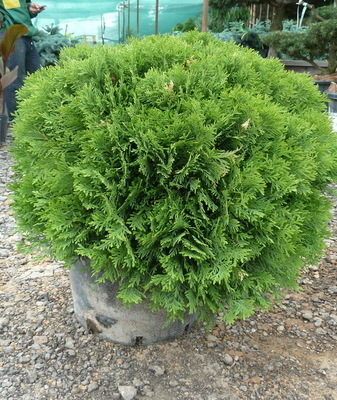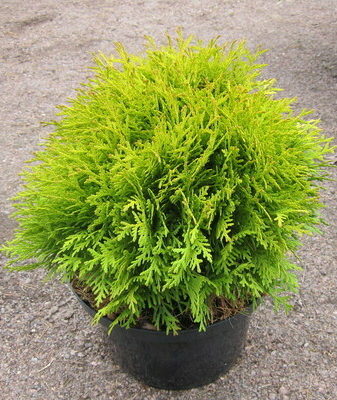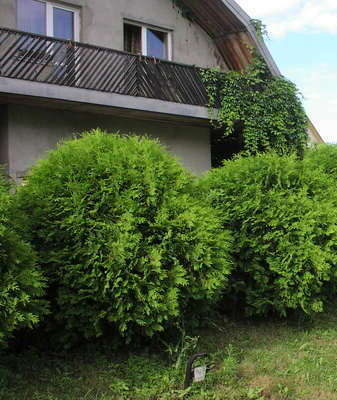Thuja transplant
Content:
With the help of thuja, you can create an autumn spectacular landscape composition at your summer cottage, which will decorate the entire garden. Thuja does not change its color at any time of the year. She rarely gets sick, withstands fairly severe frosts and does not require much attention and special care. But if the circumstances are such that your thuja needs to be transplanted to another place in the summer, then you need to prepare for this process. The health of the plant and how quickly it takes root after transplanting depends on how correctly you act. Transplanting a thuja is a serious step, so before starting the process, study the information about the characteristics of the plant and how to transplant an adult thuja.
Thuja transplant: what you need to know before transplanting
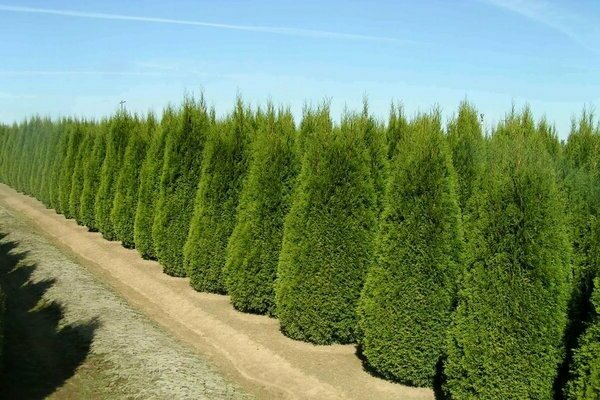
Thuja can be called a relative of the juniper, both species belong to the Cypress family. Sometimes thuja is also called the “tree of life”.
There are very different types of thuja: dwarf, which can be grown at home in a pot, magnificent shrubs for a summer cottage, as well as tall trees, the growth of which can exceed fifty meters (the diameter of the trunk of such plants can be about five meters).
Such giants are found only in North America and Asia. In addition, like juniper, thuja is a long-liver. The plant that you plant on the site will delight more than one generation of your family.
In addition to longevity, there are many more factors that contribute to the popularity of the plant:
- Thuja can withstand frosts, not only in the middle lane, but also in Siberia and in the Urals.
- Thuja can be grown not only in the garden, but also at home on the windowsill. There are varieties that grow well indoors.
- The plant does not make demands on the environment, it feels comfortable next to a busy highway or in a gas-polluted city.
- In the process of trimming from thuja, you can create a figured composition, which will be the main exhibit of the site.
- Thuja, like all conifers, has bactericidal properties, and the phytoncides released by it disinfect the air, filling it with a delicate coniferous smell.
- Thuja needles are very soft, composed of scales.
- With the arrival of autumn, you can see small cones on the thuja, which gradually change their color from green to brown, they contain the seeds of the plant. Sometimes thuja and juniper are confused, and so, in a juniper at the same time you will see cone-berries of a dark blue or red hue.
It is also advisable to choose a place closed from the winds, to prepare a nutritious soil by adding sand and peat to it. And it is important that the groundwater does not pass too close. Since the thuja must be watered weekly and abundantly, there will be enough moisture, and groundwater can contribute to root decay.
If you plan on practicing curly pruning, then wait a while. Plants 3-4 years old can be pruned. This rule does not apply to sanitary pruning, it should be done regularly.
Transplanting a thuja to a new place: step by step instructions
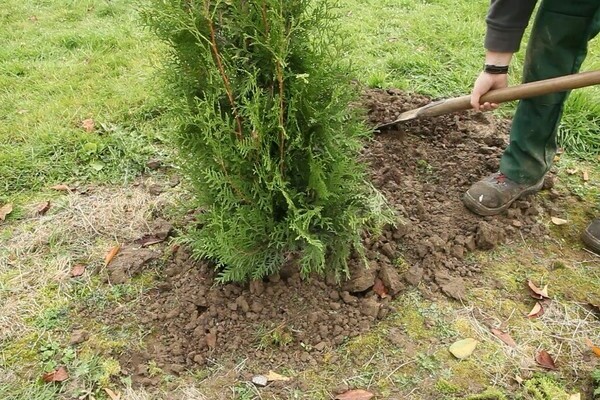
Transplant of an adult thuja: photo of the process
The first question that arises is why do you need a thuja transplant? Most often, this is a forced measure due to the fact that the plant does not feel comfortable, is sick or dries up in the same place. It could be either groundwater or too much light.
Then the thuja transplant is the only measure, there is nothing left but to move the thuja to a more convenient place. In all other cases, you should think carefully about everything and, possibly, refuse the transplant. Since conifers, especially adults, tolerate it very hard and are not always able to take root in a new place.
Well, the second question is the time of the thuja transplant, it is much easier to answer it. We have already said above that the ideal time would be April, May and September. But a cool August is also quite suitable for such work.
We must act carefully and carefully. Prepare well and carry out the process step by step in the following order:
- Choose a place where there are no drafts, sunlight in the morning and afternoon, and shade during the day. If there is no such place, then the shadow can be created artificially.
- Prepare the hole three weeks before planting. If you have an adult plant, then the hole should be very large, at least twice the size of an earthen coma.
- Lay a drainage layer of gravel, broken brick or expanded clay at the bottom of the pit. Mix the soil with compost and peat, add a little ash and sand.
- The day on which the transfer will take place should not be hot, dry cloudy weather will be ideal. You have to work in the evening.
- Lower the plant with an earthen clod into the hole, while leaving the roots so as not to damage. Make sure that the root collar is at the same level as the edge of the hole.
- When you are finished filling the hole with earth, tamp it down and water it well. Mulch the soil in the near-trunk circle using coniferous litter or bark for this.
- Water the plant periodically with a Growth Booster to speed up new root growth. eight
- If the plant is tall, install supports and tie it up. When transplanting, it is very important to orient the plant to the cardinal points. That is, those branches that were directed to the east in the old place should look in the same direction on the new one. In order not to get confused, you can tie on the same ribbons with the designation of the cardinal points, while it is still in the same place.
Thuja after transplantation: caring for the plant in a new place
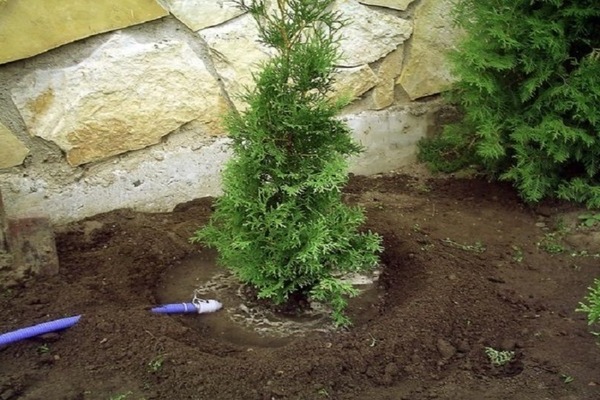
Transplant of an adult thuja: photo of the process
In the first two to three weeks after the thuja transplant has occurred, one must be extremely careful about the plant. Water it twice a week. When determining the schedule and amount of watering, be guided by the weather conditions. If it rains twice a week, then of course you can skip watering. And also it is necessary to build a shelter for the thuja from the sun's rays. To do this, you can use gauze or a mosquito net.
In the first two to three years after the thuja transplant, only forced sanitary pruning should be carried out and the plant should be very well insulated for the winter. To do this, cover the soil of the near-trunk circle with mulch, the layer must be very high. You can use peat, fallen dry leaves, spruce branches.
Wrap the crown well with burlap and secure it. There is no need to fertilize thuja immediately after planting, and after the first winter, fertilizing is carried out as usual - in spring and summer. It is not necessary to fertilize thuja starting from the second half of August.
Thuja transplant: planting seedlings from a container into the ground
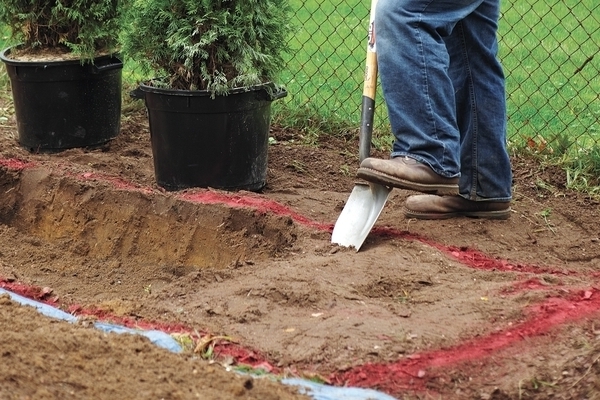
Transplant of an adult thuja: photo of the process
If you are planning to plant a freshly bought thuja, then the best time for this is spring, after the snow melts and the soil warms up enough.
Prepare the pit for the plant in the fall. Nutrient soil is a mixture of peat, compost, sand and turf soil. You can add superphosphate to the pit before planting, but only so that it does not come into contact with the roots.
Lay drainage at the bottom, if there is no broken brick or expanded clay, then you can use sand.Carefully remove the plant from the container, making sure that the earthy ball does not fall apart.
You need to act quickly, since you cannot leave bare roots in the air for a long time. That is, after taking the plant out of the container, it must be immediately lowered into the pit. Compact the soil, water and mulch.
Diseases and harmful insects that can threaten thuja
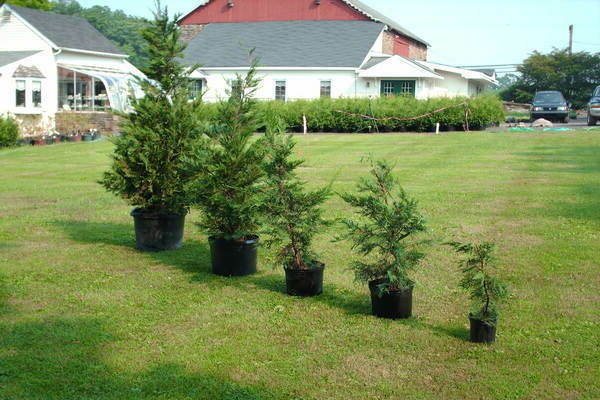
Thuja has good immunity, gardeners rarely encounter diseases of this plant and, as a rule, they are always associated with improper care and a violation of the watering regime. Moreover, troubles can affect both the room thuja and the garden plant.
The most common are four diseases: "brown shoots", "rust", "late blight" and "shute".
In the fight against the first two diseases, you can resort to the help of Bordeaux liquid, as well as the preparations "Fundazol", "Hom". The same Bordeaux liquid or Topsin drug will help get rid of shute, but late blight, unfortunately, is not cured.
You will have to remove and burn the damaged plant, and disinfect the soil at the place of its growth more than once.
If we talk about pests that can threaten thuja, then among them are thuja aphids, leaf rollers and various mites. In this case, you will have to use insecticidal preparations: "Fufanon", "Karate", "Bi-58", "Decis", "Karbofos".
Transplanting any plant to a new place requires attention and accuracy. Transplanting an adult thuja is a particularly responsible event. But if you do everything right and provide that proper care, then everything will go well and it will quickly take root in a new place.


